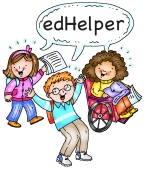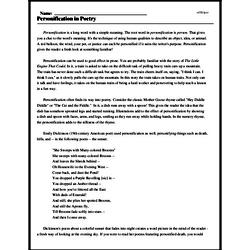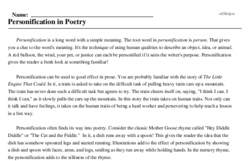Personification in Poetry
Personification is a long word with a simple meaning. The root word in personification is person. That gives you a clue to the word's meaning. It's the technique of using human qualities to describe an object, idea, or animal. A red balloon, the wind, your pet, or justice can each be personified if it suits the writer's purpose. Personification gives the reader a fresh look at something familiar!
Personification can be used to good effect in prose. You are probably familiar with the story of The Little Engine That Could. In it, a train is asked to take on the difficult task of pulling heavy train cars up a mountain. The train has never done such a difficult task but agrees to try. The train cheers itself on, saying, "I think I can. I think I can," as it slowly pulls the cars up the mountain. In this story the train takes on human traits. Not only can it talk and have feelings, it takes on the human traits of being a hard worker and persevering to help teach a lesson in a fun way.
Personification often finds its way into poetry. Consider the classic Mother Goose rhyme called "Hey Diddle Diddle" or "The Cat and the Fiddle." In it, a dish runs away with a spoon! This gives the reader the idea that the dish has somehow sprouted legs and started running. Illustrations add to the effect of personification by showing a dish and spoon with faces, arms, and legs, smiling as they run away while holding hands. In the nursery rhyme, the personification adds to the silliness of the rhyme.




